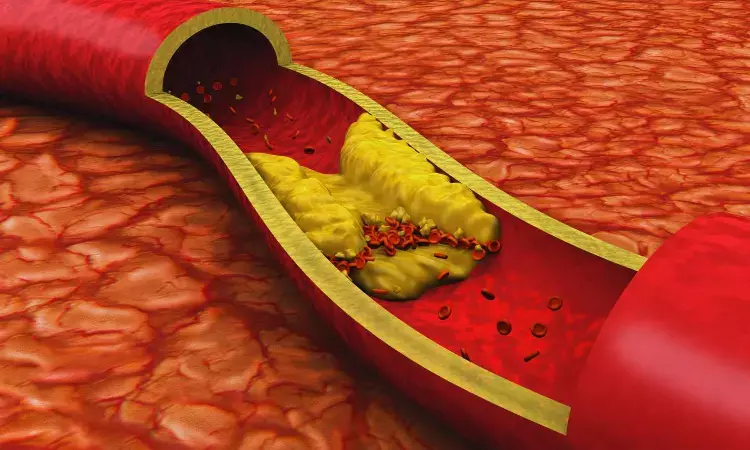- Home
- Medical news & Guidelines
- Anesthesiology
- Cardiology and CTVS
- Critical Care
- Dentistry
- Dermatology
- Diabetes and Endocrinology
- ENT
- Gastroenterology
- Medicine
- Nephrology
- Neurology
- Obstretics-Gynaecology
- Oncology
- Ophthalmology
- Orthopaedics
- Pediatrics-Neonatology
- Psychiatry
- Pulmonology
- Radiology
- Surgery
- Urology
- Laboratory Medicine
- Diet
- Nursing
- Paramedical
- Physiotherapy
- Health news
- Fact Check
- Bone Health Fact Check
- Brain Health Fact Check
- Cancer Related Fact Check
- Child Care Fact Check
- Dental and oral health fact check
- Diabetes and metabolic health fact check
- Diet and Nutrition Fact Check
- Eye and ENT Care Fact Check
- Fitness fact check
- Gut health fact check
- Heart health fact check
- Kidney health fact check
- Medical education fact check
- Men's health fact check
- Respiratory fact check
- Skin and hair care fact check
- Vaccine and Immunization fact check
- Women's health fact check
- AYUSH
- State News
- Andaman and Nicobar Islands
- Andhra Pradesh
- Arunachal Pradesh
- Assam
- Bihar
- Chandigarh
- Chattisgarh
- Dadra and Nagar Haveli
- Daman and Diu
- Delhi
- Goa
- Gujarat
- Haryana
- Himachal Pradesh
- Jammu & Kashmir
- Jharkhand
- Karnataka
- Kerala
- Ladakh
- Lakshadweep
- Madhya Pradesh
- Maharashtra
- Manipur
- Meghalaya
- Mizoram
- Nagaland
- Odisha
- Puducherry
- Punjab
- Rajasthan
- Sikkim
- Tamil Nadu
- Telangana
- Tripura
- Uttar Pradesh
- Uttrakhand
- West Bengal
- Medical Education
- Industry
Increased LDL-C worsens the risk of future coronary heart disease events: EHJ

A new study published in the European Heart Journal showed that non-calcified plaques are more common in symptomatic persons with a coronary artery calcification (CAC) score of zero but elevated low-density lipoprotein cholesterol (LDL-C) values.
Increased LDL-C encourages cholesterol buildup in artery walls, which results in the development of plaque and the advancement of subclinical atherosclerosis. Measured by CT, CAC is a common indicator of atherosclerotic load and a reliable predictor of cardiovascular events. But in the early stages, some people with high LDL-C levels have zero CAC scores, which raises significant concerns about their cardiovascular risk profile.
To improve risk assessment, directing treatment plans, and maximizing preventive actions in individuals who could otherwise be undervalued by imaging alone, it is crucial to comprehend how LDL-C and cardiovascular outcomes interact when calcifications are absent. This study examines whether high levels of LDL-C are linked to future cardiovascular events and the existence of non-calcified plaques in people with CAC = 0 at various ages.
Symptomatic patients receiving coronary computed tomography angiography (CCTA) between 2008 and 2021 were included in this Western Denmark Heart Registry cohort research, which had a median follow-up period of 7.1 years. The results included adjusted hazard ratios (aHR) for coronary heart disease (CHD) and adjusted odds ratios (aOR) for non-calcified plaque on CCTA.
There were 23,777 participants in the research with CAC = 0. With a median age of 54 (Q1-Q3 47-61) years, 61% of the population was female. Eleven percent of people had non-calcified plaques.
The overall aOR for non-calcified plaques was 1.21 [95% CI 1.16-1.27] for every 1 mmol/L increase in LDL-C; 1.39 (1.23-1.56) at age ≤45, 1.22 (1.14-1.31) at age 46-60, and 1.11 (1.02-1.21) at age >60 were the equivalent values.
A CHD incident occurred in 299 (1%) during follow-up. The overall aHR for CHD was 1.28 (1.13-1.46) per 1 mmol/L higher LDL-C; the values that corresponded were 1.37 (1.04-1.82) at age ≤45, 1.24 (1.04-1.49) at age 46-60, and 1.26 (1.00-1.60) at age >60.
Overall, elevated LDL-C is linked to a greater risk of non-calcified plaque and a higher relative risk of future CHD events in symptomatic persons with CAC = 0, with the relationship being most noticeable at age ≤45. This suggests that even when CAC = 0, LDL-C control over an extended period of time is still significant in younger people.
Reference:
Andersen, M. H., Jensen, J. M., Kanstrup, H., Sand, N. P. R., Busk, M., Hansen, M. K., Thrane, P. G., Olesen, K. K. W., Nordestgaard, B. G., Blaha, M. J., Maeng, M., Nørgaard, B. L., & Mortensen, M. B. (2025). Low-density lipoprotein cholesterol and cardiovascular risk in the absence of calcifications on computed tomography: the Western Denmark Heart Registry. European Heart Journal. https://doi.org/10.1093/eurheartj/ehaf497
Neuroscience Masters graduate
Jacinthlyn Sylvia, a Neuroscience Master's graduate from Chennai has worked extensively in deciphering the neurobiology of cognition and motor control in aging. She also has spread-out exposure to Neurosurgery from her Bachelor’s. She is currently involved in active Neuro-Oncology research. She is an upcoming neuroscientist with a fiery passion for writing. Her news cover at Medical Dialogues feature recent discoveries and updates from the healthcare and biomedical research fields. She can be reached at editorial@medicaldialogues.in
Dr Kamal Kant Kohli-MBBS, DTCD- a chest specialist with more than 30 years of practice and a flair for writing clinical articles, Dr Kamal Kant Kohli joined Medical Dialogues as a Chief Editor of Medical News. Besides writing articles, as an editor, he proofreads and verifies all the medical content published on Medical Dialogues including those coming from journals, studies,medical conferences,guidelines etc. Email: drkohli@medicaldialogues.in. Contact no. 011-43720751


